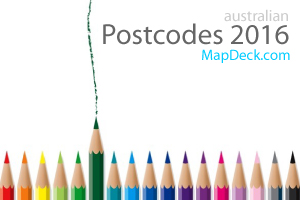I came across an interesting post on Google Maps Mania blog pointing to a French real estate website with quite a novel approach to presenting property prices. While in Australia commentators focus only on median prices for capital cities, the French show the information at individual land parcel level (or close to it). Not to mention that they use “price per sqm” statistics - a much more useful measure for comparison and estimation of property values. The efficity.com property prices map is a great example of presenting a huge volume of data in a very accessible and easy to digest format.
The closest we came in Australia to such a map was a simple mapping app published by Fairfax on domain.com.au but unfortunately the map is no longer available. Creating a map similar to what efficity.com accomplished would be possible in Australia if you have access to price estimates as well as a full profile of each property – something only RP Data can afford in this country. In the past, I mapped property sales statistics for postcodes in Melbourne and Sydney but the information is not available on regular basis. So, in Australia, serious property hunters doing market research are limited to reading listings on real estate portals or buying property sales reports for individual suburbs.
Related posts:
Map of Melbourne house prices
Sydney house prices
WA housing affordability index
Aircraft noise maps
Mapping sun position anywhere
Thursday, February 28, 2013
Subscribe to:
Post Comments (Atom)




7 comments:
I'm often doubt the value of published stats on proprty prices, because they reflect which houses (old or new, large or small) were sold in the relevant period.
True, the information is either too aggregated or too fragmented. What in your opinion would be the ideal set of data?
Yeah, it's not easy to show property prices. In the case of efficity map, we use a price model calibrated on hundreds of thousands of sell prices for paris and its suburbs. This model is then used to show stats on prices for a flat at the second floor and with two rooms. Our main issue is more prediction as the data we used now is not so fresh (we can only retrieve a selling price three months after the selling of a house/flat).
Hey guys !
many thanks for your nice words about our property prices map ! we really appreciate your website and the great job u're doing !
Efficity Team
You are most welcome. I am always happy to share a good story and examples of useful applications. Great applications deserve all the publicity. Good luck for the future!
Regarding predictive modelling of property prices. It is hard to solve this puzzle with a great level of accuracy. There are many methods and none is perfect. In Australia RP Data is publishing a daily index of price change but it lacks spatial context. I think that approach adapted for efficity.com purposes has much more practical applications. Data dictates what you can do but if you could access listings of properties for sale, that information could be used to estimate “current value per sqm” more timely. Of course, results would still require revision after sales data are published. I am experimenting with similar ideas but with much more scarce data so, can really only focus on modelling change over time and relative values rather than absolute prices. I would be happy to exchange the notes!
The value of a property would seem to be a function of many things - area, number of rooms, age, location, the particulars of the house, and the current year. And any of these may correlate with each other.
One could throw lots of stats together and come up with a very rough formula, so if you specify a location, number of rooms, type & age of house, you might get an estimate, but a very rough one.
A house buyer comes with particular needs wrt number of rooms, area etc.
Investors mostly want to know what houses will increase in value, which relates to increasing utility of the location or increasing prices generally.
So I have little idea how best to display relative value of a location.
Post a Comment